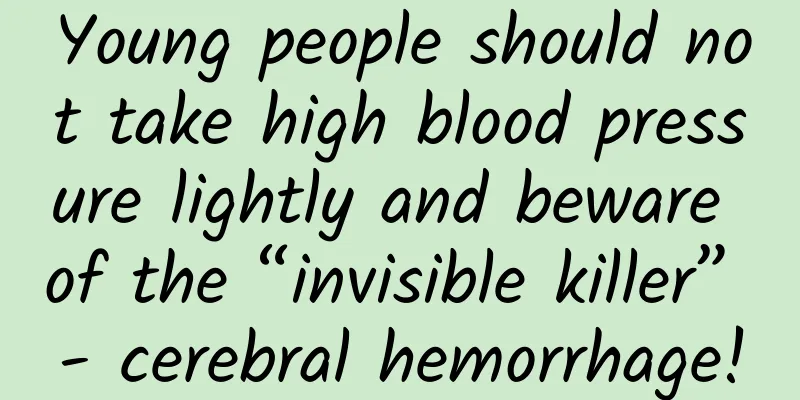What should women do if they have hemorrhoids?

|
It used to be said that "nine out of ten men suffer from hemorrhoids", which means that the proportion of men suffering from hemorrhoids is very high. In fact, the possibility of women suffering from hemorrhoids is even higher than that of men. Many women suffer from hemorrhoids due to pregnancy or childbirth. They often experience symptoms such as anal pain during bowel movements, buttock pain when sitting for a long time, and blood in the stool. So, how should women treat hemorrhoids? Asymptomatic hemorrhoids do not require treatment; symptomatic hemorrhoids do not require radical treatment; non-surgical treatment is the main method. (1) General treatment is applicable to most hemorrhoids, including the early stages of thrombotic and incarcerated hemorrhoids. Pay attention to your diet, avoid alcohol and spicy foods, increase fiber foods, eat more fruits and vegetables, drink more water, change bad bowel habits, keep bowel movements smooth, take laxatives when necessary, and clean the anus after defecation. For prolapsed hemorrhoids, be careful to gently push the hemorrhoids back with your hands to prevent them from falling out again. Avoid sitting or standing for long periods of time, do appropriate exercise, take a sitz bath in warm water (which may contain potassium permanganate) before going to bed, etc. (2) Local medication has been widely used, including suppositories, ointments and lotions, most of which contain Chinese herbal ingredients. (3) Oral medications are generally used to treat varicose veins. (4) Injection therapy is more effective for grade I and II bleeding internal hemorrhoids. The sclerosant is injected around the venous plexus in the submucosal layer to cause an inflammatory reaction and fibrosis, thereby compressing the varicose veins. The treatment can be repeated after one month to avoid injecting the sclerosant into the mucosal layer and causing necrosis. (5) Physical therapy: laser therapy, cryotherapy, direct current therapy, copper ion electrochemical therapy, microwave thermocoagulation therapy, and infrared coagulation therapy are less commonly used. (6) Rubber band ligation is used to tie the root of the hemorrhoids to block their blood supply and cause the hemorrhoids to fall off and necrotize. It is suitable for grade II and III internal hemorrhoids, and is more suitable for giant internal hemorrhoids and fibrotic internal hemorrhoids. Severe cases require surgical treatment. If hemorrhoids are not very serious, non-surgical methods can be used for treatment, such as Chinese medicine fumigation, deep suppository, etc. When it is serious, surgical treatment is required. Eating less spicy food, drinking more water, eating more laxative foods, avoiding constipation, and doing pelvic floor exercises regularly can all relieve the symptoms of hemorrhoids. |
<<: What are the benefits of drinking honey for women?
>>: What should women do if they have lower abdominal pain when urinating?
Recommend
The best fruit for pregnant women to stop vomiting
Women will experience various pregnancy reactions...
Why are women more sleepy than men? Scare you to death!
Narcolepsy is an uncommon mental illness. Its mai...
Why do butterfly plum leaves turn yellow? How to save butterfly plum leaves from turning yellow?
Butterfly plum is a common flower in life. Becaus...
Why do I have my period twice in half a month?
Under normal circumstances, menstruation comes on...
Can't sleep because of nasal congestion? Please remember these four methods to clear your nose!
In the hot summer, the air conditioner is turned ...
What is the effect of applying cucumber slices on the face?
Cucumbers are widely loved by female friends, esp...
Causes and symptoms of nosebleeds in girls
Nosebleeds are quite dangerous for many women, es...
What is the treatment for white skin on the vulva?
Some people will find white skin on the vulva, wh...
How long does it take for a woman to have her period after the full moon?
Female menstruation is an eternal topic, because ...
Do you think stretch marks can be removed?
Female friends who have given birth may be confus...
Are there risks in getting breast augmentation implants?
For female friends who love beauty, you all hope ...
What to do if you have severe toothache during late pregnancy
During pregnancy, the fetus in particular needs c...
Can I have sex if I smoke during early pregnancy?
Many men like to smoke. Due to the great social p...
When do stretch marks start to appear?
After a woman becomes pregnant, as the fetus grow...
Is it better to take gynecological Chinese medicine before or after meals?
Due to their special physiological characteristic...









